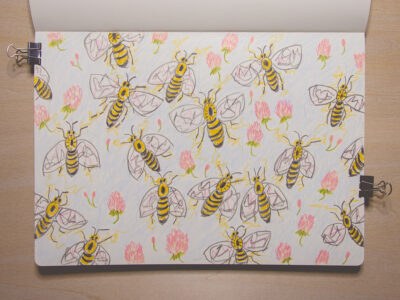When you think about saving the bees, I’m guessing you think about the honey bee. People have rallied to its defense, and that’s a good thing. The honey bee, like all insects, is struggling right now.
But according to the Xerces Society and this very interesting podcast, honey bees aren’t in any real trouble — it’s the native bees that need our help.
“There are literally millions of hives all over the world, probably tens of millions and potentially even hundreds of millions. … But from that perspective, honey bees are in a situation right now where they’re still fairly resilient.”
Honey bees aren’t native to the U.S; they’re considered an introduced species. We brought them here from Europe in the 1600s for their honey and wax. Later we started using them for their pollination services. We found ways to store honey bees in boxes and transport them all over the country to pollinate crops.
Our agricultural system is now dependent on the honey bee, and that’s why you see so many headlines about honey bees. They thrive in our current monoculture system — one big field, one crop, one type of flower. A hive of 10 to 50,000 honey bees can learn to extract the pollen and nectar from that one flower and do it over and over again. We use them so extensively they’re now considered livestock rather than wildlife.
So the honey bee’s decline is an agricultural concern, but there are ways around this. If we think from a more sustainable farming perspective, we could let our native bees do the pollination without turning them into a commercial resource.
“There are ways to grow crops such that there’s enough native habitat nearby that we can have our native bees do a vast majority of the pollination services.”
We have more than 3,500 native bee species in the U.S., and they do need our attention. There are a number of native bumble bee species that are either federally listed as endangered or considered close to extinction.
The honey bee is only one species out of thousands, and beyond agriculture and honey production, we don’t need it. In fact, in natural areas more honey bees on the landscape can be disruptive. A hive of 10,000 in your neighborhood makes it that much harder for the native bee populations to find food.
So if you’re like me and concerned that you’re not seeing honey bees anywhere, it’s okay. Start looking for a variety of native bees instead.
And if you know someone who is thinking about buying a honey bee hive to save the bees, have them listen to this podcast first: “Saving the Bees: Why Honeybees Are Not the Answer.”
There are other ways to help the bees.


 5 Fascinating Facts About Bees
5 Fascinating Facts About Bees